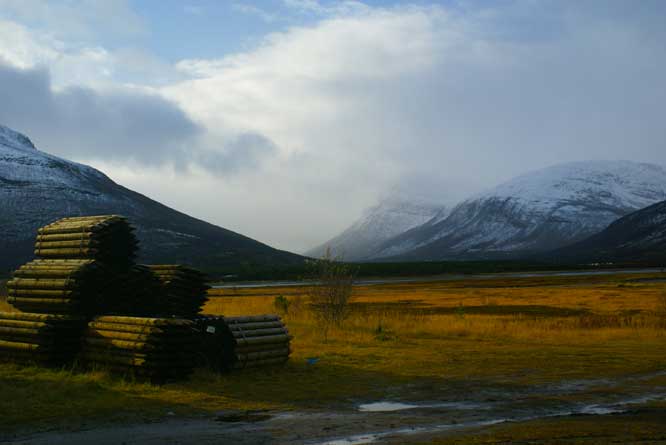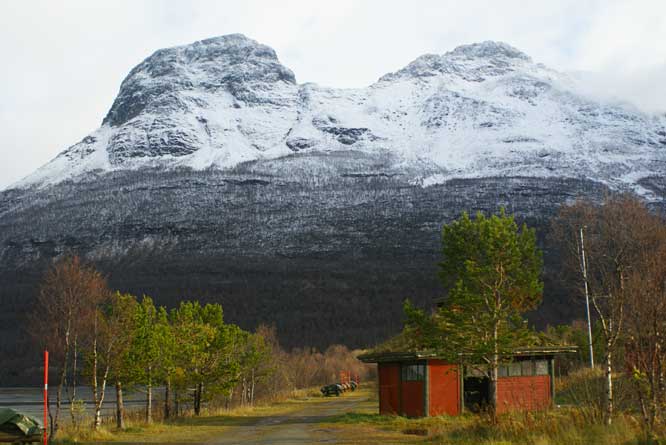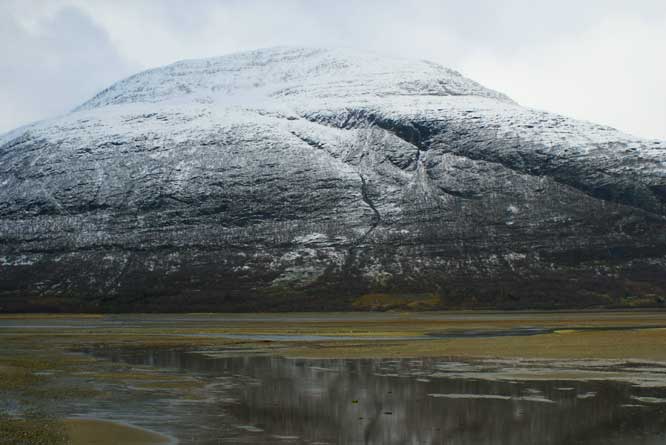Tromso E6-E8 Junction WW2 The burning of Finnmark
Apart from being a gorgeous location the E6 highway at the Junction of the E8 highway in the Arctic was important in the final years of WW2. The German troops in Finland had to retreat back to Norway when their former allies Finland changed sides.

The German troops could not retreat through neutral Sweden so the pass through the mountains was the quickest escape route. They Germans intended to fall back to a new defensive positions around Lyngen and Skibotn just to the north of Tromso. This action was called operation Northern Lights.
In early October 1944, some 53,000 men of the German 19th Mountain corps were still some 45 mi (72 km) inside Russia along the Litsa River and the neck of the Rybachy Peninsula. The plan was for them to reach Lakselv in Norway, some 160 mi (260 km) west, by November 15. By October 7, however, the combined Soviet 14th Army and Northern fleet, consisting of some 133,500 men under Field Marshall Kirill Meretskov, attacked the weakest point of the German line, the junction between the 2nd and 6th Mountain Divisions. During the retreat they were attacked by the Soviet Navy.

The German Army instigated a scorched earth policy to deny the advancing Soviets supplies. Towns, villages and farmsteads were set on fire. Port installations, factories, mines and offices were blown up and only a few small houses were left standing. The German troops were ordered to leave the area devoid of people, shelter and supplies.
Over 43,000 people were forced to leave their homes and head south. About 25,000 people hid in the hills and mine tunnels until the Germans had left. They had to spend the cold Arctic winter in horrendous conditions always fearful of being found by a German patrol.

The Soviet Army did not follow the Germans. They dug in for the winter. The Norwegian Army having spent over four years in exile in Britain set sail for Murmansk to join the Soviet forces. They arrived 10th November 1944. They went to support the front line troops and sent out patrols. The reports came back that the Germans were laying mines and booby-traps along the way, a few people were left here and there and many of the buildings were burnt down.
Some of the local Norwegians formed 'guard companies' and were armed with Soviet weapons. The Allied troops slowly advanced. A big supply operation was mounted by air and sea through the cold winter. When the Germans finally surrendered 8th May 1995 the Norwegian and Soviet forces had reached a position which is now the Finnmark-Troms boarder to the west of Alta
On liberation it was found that many Russian prisoners of war had been worked to death making fortifications. The eastern side of the Lyngden Alpine ridge was going to form the front line of the German's defenses. Gun emplacements and bunkers made out of reinforced concrete were built. A total of 10,262 Norwegians lost their life during the war.
Travel books

